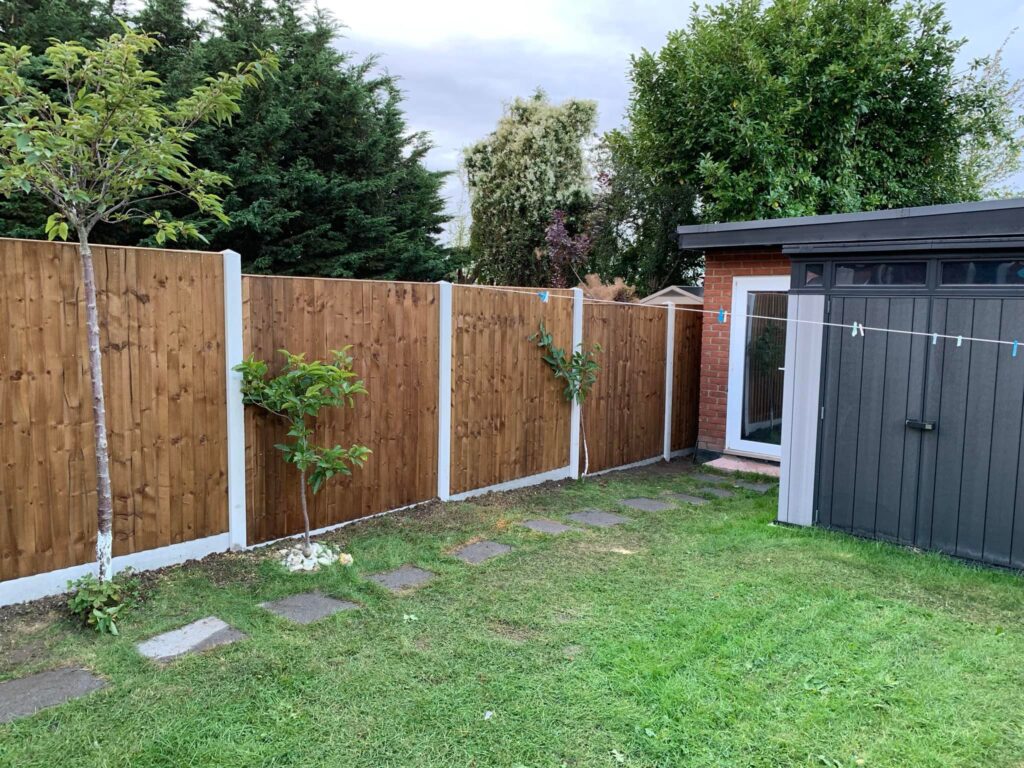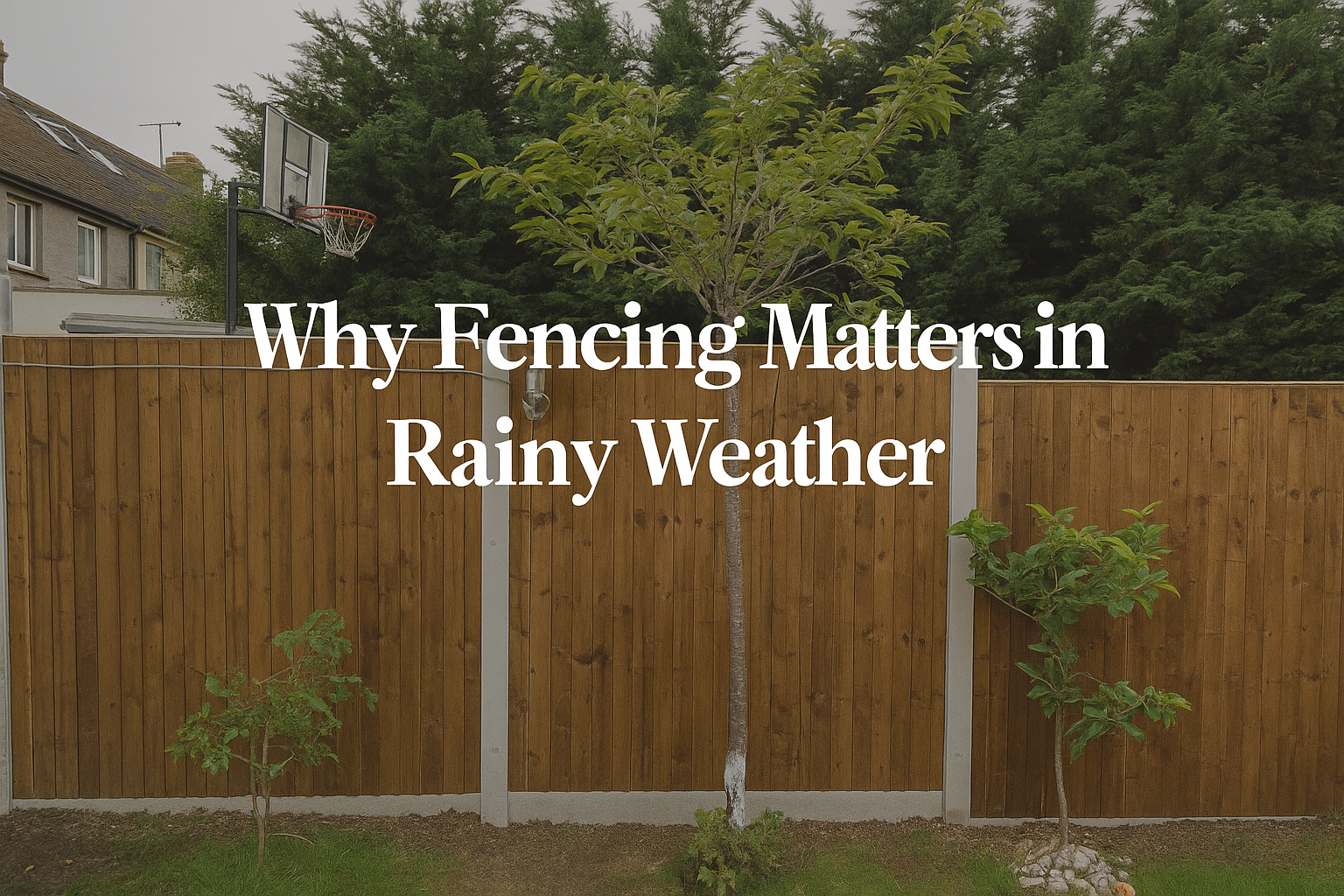TL;DR: A sturdy garden fence with durable fence panels and treated fence posts protects your outdoor space from rain damage, rot, and leaning. Using quality paints like Ronseal or Cuprinol and proper installation ensures your fence withstands the wet British weather – you can contact PI Gardening for a free quote and a conversation around how to improve your garden.
Introduction
When the British rain sets in, most of us think about waterproof coats and wellies – but what about our gardens? The humble fence is the one that often takes the brunt of the wet weather. From rotting posts to peeling paint, a damaged garden fence can quickly spoil your outdoor space and even compromise your garden’s security. Here’s why good fencing in rainy weather matters more than you might think – and how to keep yours standing strong.
The Hidden Impact of Rain on Your Fence
Rain might seem harmless, but over time, it can wreak havoc on your fence panels and fence posts. Persistent moisture seeps into untreated wood, leading to rot, swelling, and leaning structures. Once the posts weaken, even mild winds can send a garden fence tumbling.
For this reason, many UK homeowners now opt for concrete fence posts, which provide a stable, long-lasting foundation that won’t rot in damp soil. Alternatively, plastic fence panels and chain link fences offer modern, low-maintenance solutions that won’t absorb moisture or warp over time.
Choosing the Right Materials for the British Climate
Different materials react differently to moisture, so it’s worth knowing your options:
- Timber fence panels: Beautiful and traditional, but need regular care with a quality fence paint or wood treatment.
- Concrete fence posts: Extremely durable, ideal for wet conditions and heavy soil.
- Picket fence panels: Great for style and curb appeal, but they’ll need re-coating more often in rainy regions.
- Chain link fence: Low-maintenance and perfect for areas prone to flooding or high moisture.
Mixing materials can work wonders, and pairing Wickes fence panels or B&Q fence panels with concrete fence posts gives you both beauty and strength, without the worry of rot.
Protecting Your Fencing with Paints and Treatments
Keeping your fencing weatherproof starts with the right products. High-quality fence paint doesn’t just add colour – it seals the wood, repels water, and prevents mould.
Trusted brands like Ronseal fence paint and Cuprinol fence paint are excellent options for long-lasting protection. Applying these with a fence sprayer ensures an even finish that reaches every nook and cranny.
Don’t forget your fence post spikes – lifting wooden posts slightly off the ground helps stop them from sitting in waterlogged soil, extending their life significantly.


Common Wet-Weather Fence Problems (and How to Avoid Them)
When rainy weather sets in, your garden fence can start to show signs of strain, even if it has stood strong for years. From sagging panels to peeling paint, these common issues can quickly turn a once-proud garden fence into a source of frustration.
- Rotting posts: Replace wooden posts with concrete fence posts or protect them using fence post spikes.
- Warped or leaning panels: Caused by waterlogged soil—ensure proper drainage around your fence line.
- Flaking or fading paint: Use reliable products like Ronseal or Cuprinol fence paint and recoat annually.
- Moss and mould build-up: Clean with a mild detergent or power washer before re-painting.
- Loose panels: Secure them early with weatherproof fixings before strong winds arrive.
By addressing these problems promptly, you can keep your fence looking great and performing well, protecting your garden against the next British downpour.
When to Repair or Replace Your Fencing
If your garden fence panels are sagging, cracked, or showing signs of rot, it may be time to replace them. Combining new Wickes fence panels or B&Q fence panels with existing concrete fence posts is a cost-effective upgrade that strengthens your garden’s boundary.
Meanwhile, if only one fence post is loose, you can often fix it with fence post spikes for added support. Of course, you can always contact PI Gardening – we believe a strong fence is the backbone of any great garden, so we make sure to install durable, weatherproof fencing using quality materials from classic picket fence panels to modern plastic fence panels.
FAQs
How often should I repaint my garden fence?
For wooden fences, reapply fence paint or treatment every 2-3 years, or sooner if the finish starts to fade. Products like Cuprinol fence paint and Ronseal fence paint offer great protection.
Are concrete fence posts really worth it?
Absolutely. Concrete fence posts won’t rot, warp, or shift in wet soil, making them ideal for the UK’s rainy climate.
Can I install new fence panels in wet weather?
Light rain is fine, but avoid heavy downpours as it can affect setting times for post mix and paint adhesion.
What’s the best way to prevent rot at the base of fence posts?
Use fence post spikes or concrete supports to keep posts above ground moisture, and always apply a waterproof coating before installation.
Should I choose wood or plastic fence panels?
Wooden garden fence panels look more traditional but need maintenance; plastic fence panels are low-maintenance and weather-resistant—great for long-term savings.
Final Thoughts
A well-built, well-maintained garden fence isn’t just about privacy—it’s about protection, longevity, and peace of mind through every rainy season. With the right fence panels, fence posts, and care, your outdoor space can stay beautiful and secure no matter the weather.

